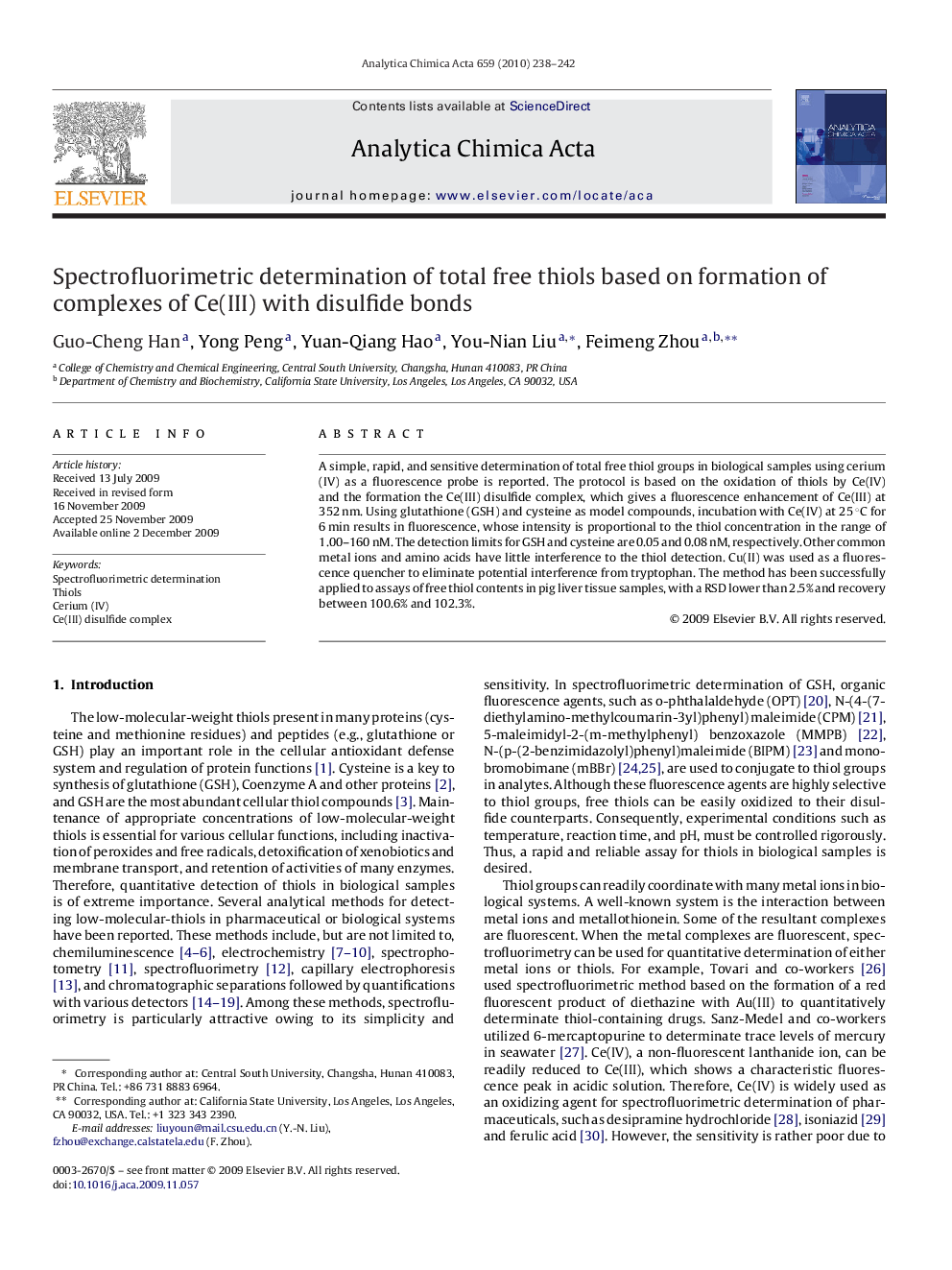| Article ID | Journal | Published Year | Pages | File Type |
|---|---|---|---|---|
| 1168008 | Analytica Chimica Acta | 2010 | 5 Pages |
A simple, rapid, and sensitive determination of total free thiol groups in biological samples using cerium (IV) as a fluorescence probe is reported. The protocol is based on the oxidation of thiols by Ce(IV) and the formation the Ce(III) disulfide complex, which gives a fluorescence enhancement of Ce(III) at 352 nm. Using glutathione (GSH) and cysteine as model compounds, incubation with Ce(IV) at 25 °C for 6 min results in fluorescence, whose intensity is proportional to the thiol concentration in the range of 1.00–160 nM. The detection limits for GSH and cysteine are 0.05 and 0.08 nM, respectively. Other common metal ions and amino acids have little interference to the thiol detection. Cu(II) was used as a fluorescence quencher to eliminate potential interference from tryptophan. The method has been successfully applied to assays of free thiol contents in pig liver tissue samples, with a RSD lower than 2.5% and recovery between 100.6% and 102.3%.
